April 19-30, 2010
The past two weeks have been full of rain. The kinds of rain that last all night, lightly drizzling, and occasionally coming down hard. It feels kind of like February back in the usual rainy season. We’ve been focusing our efforts on the greenhouse, but dabbling in other areas as well.

Some of the seed beds have already started germinating (and random seeds that were left over in the soil from last year are finally popping). The baby trees (Cascol, Guachepeli, Algarrobo, Dormilon, and Seca) needed to be transplanted. Bottles were collected and prepared. Soil mixed. A truckload of soil mix from Ricardo’s farm (Cornish hen poop with woodchips, fully decomposed) was brought in to supplement the compost production at the greenhouse.

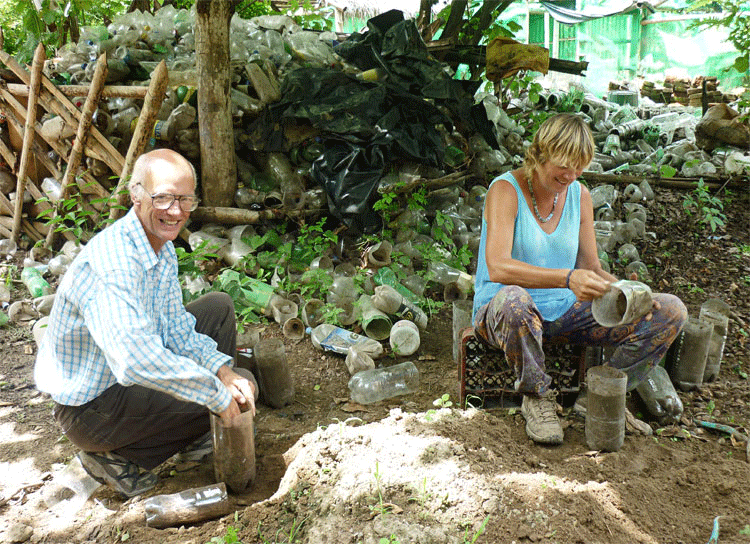

This gave me an idea. Because of the persistent rains, we are desperately low on dry, carbon-heavy material (ex: dead leaves) to mix into the compost we produce. But local woodshops throw out sawdust by the sack load. I’ve added this to the to-do list. The sawdust should help boost our compost production significantly, approximately one time as much sawdust (per unit) should be mixed with the kitchen food scraps in order to create healthy soil.
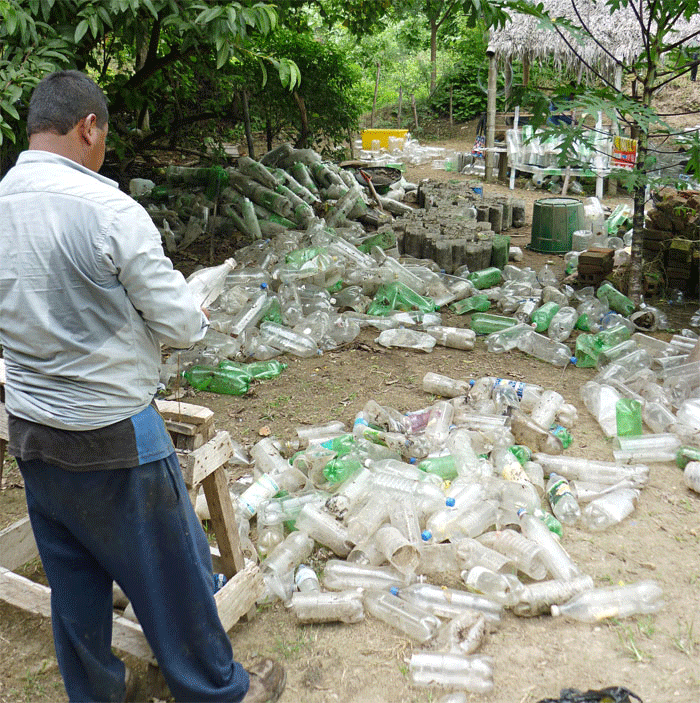
Speaking of plastic bottles at the greenhouse, remember that pile that started out as a few sacks of plastic bottle tops and the bottles left over from trees that were transplanted to the revegetation sites? Two years and thousands of three-liter bottles later, it was spilling over the storage bin that had been constructed to try and contain the plastic, litter-ally multiple cubic meters of scrap plastic pieces. Well, once again Orlando saved the day. A friend of his sells plastic to a recycling plant (at 7 cents per kilo). Between them they spent three full mornings picking through the plastic pieces (carefully watching out for critters and snakes as they worked) loading up oversized sacks with a total of 350 kilos of plastic scraps.
Planet Drum was invited to an open-house at the local municipal government to celebrate Earth Day. Though not personally a big fan of days, weeks, months, and (now even) years that are dedicated to specific causes, I decided to participate. We showed up with banners, a small truck load of trees to give out to the public and a large, laminated map (borrowed from a friend at the local city planning department) of the Bahia to Kilometro 8 corridor in which Planet Drum concentrates its revegetation efforts. I labeled recent planting sites on the map to give visitors some perspective of the scope of our project.
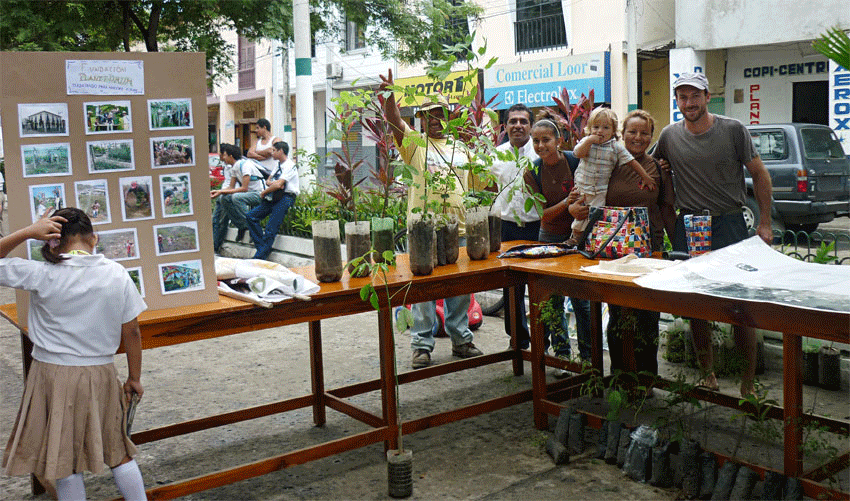

One of the guests of the Open House was Roddy Macias, Provincial Director of the Environment for Manabí (our Province). I had an opportunity to have an interesting conversation with him. He expressed some of his frustrations about limited budgets for his department and commercially-oriented “reforestation” programs, including cases, currently under investigation, where land-owners cut down forests to open lands for mono-culture tree farms. For a person in such a political position, I was impressed by his ecological outlook. He offered his support in attempting to obtain funds from higher up in the political food-chain for a future project presented by Planet Drum. When the time comes, we’ll see how serious he was being.
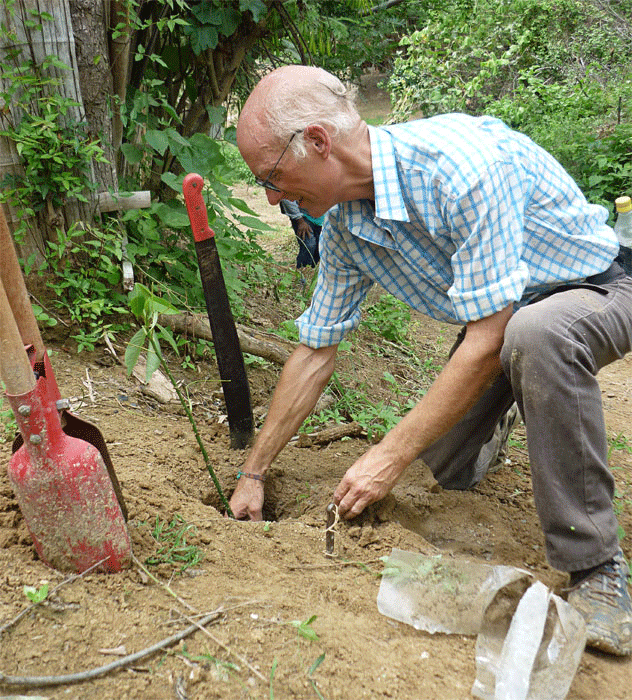
We passed out a bunch of trees, but most people wanted fruit trees for planting in patios at their houses. The few Pechiche trees we took ran out almost instantaneously, and then it was hard to unload the others species. In total, 527 Pechiche trees from the greenhouse were planted this year (at a combination of peoples’ houses and mostly at Planet Drum revegetation sites). The remaining trees from the Open House were taken up to Bellavista barrio.

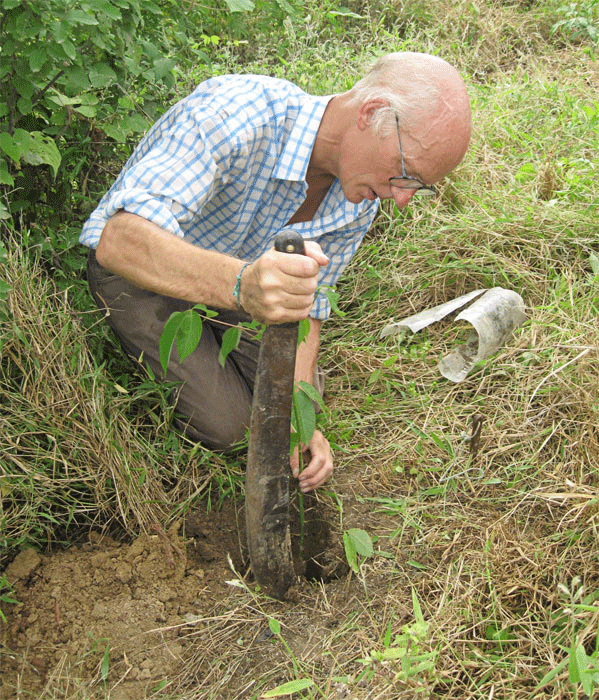

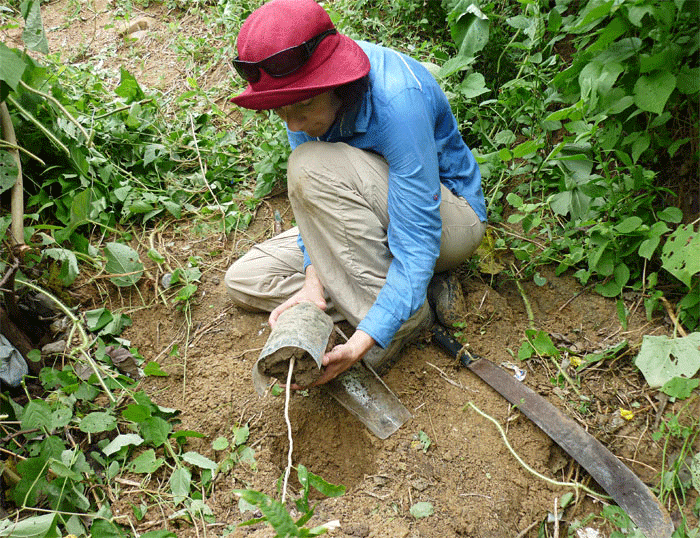
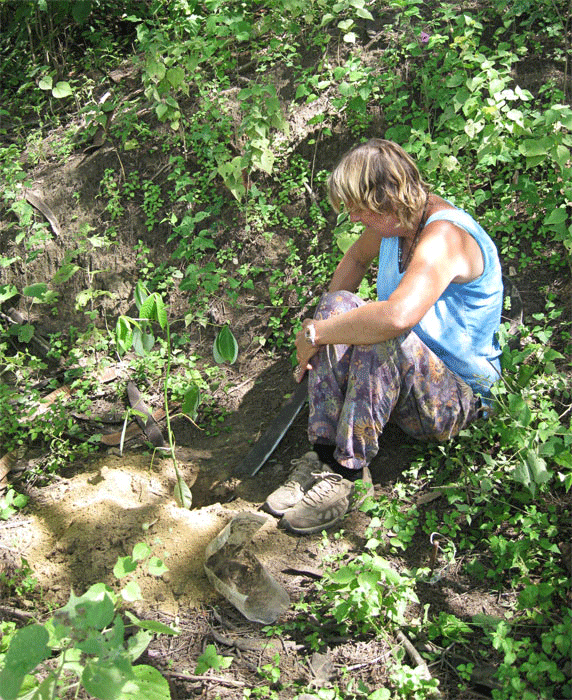
Due to some unlucky timing, it barely rained for 2-3 weeks after we planted trees there the first time (in early March). As a result, approximately twenty of the original trees died (of four-hundred and fifty). We decided to replace the dead ones and expand the site, and the move appears to have paid off, since the rains have kept up and the replacements should now be taking root where the previous trees perished.
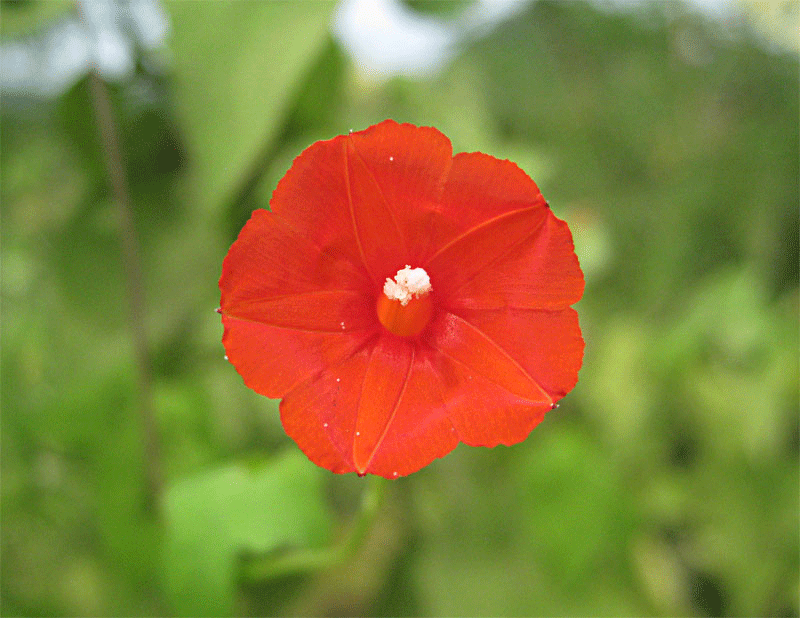
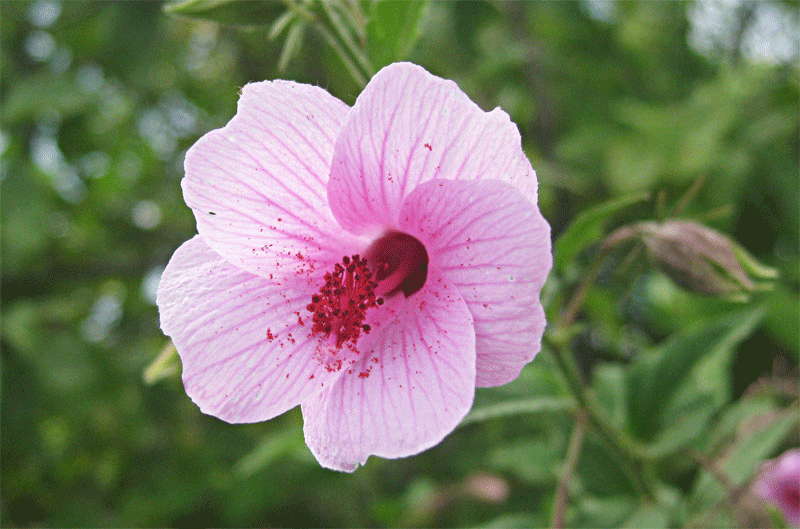
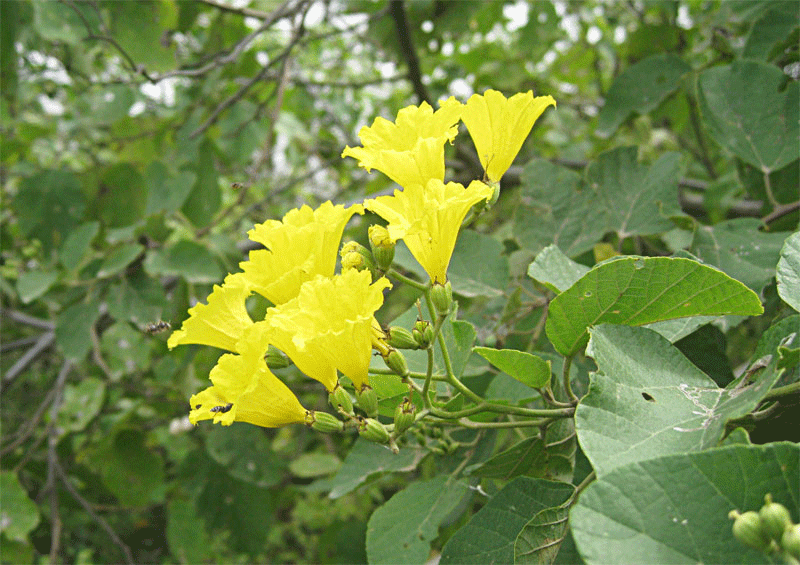
We have also dug up approximately three hundred baby Guayacan trees, which were growing directly below their parent and had no chance of surviving into maturity in their original location (mostly because this was a person’s backyard that they periodically cleared with a machete). The babies were taken to the greenhouse and planted into three-liter bottles, where they will continue to grow until the next rainy season.
The greenhouse is in spectacular shape. We will continue planting and collecting seeds (and seedlings) for next year’s batch of trees. Meanwhile, we are enjoying a short break in having to chop weeds off of the trees at this year’s revegetation sites. The weeds were hacked back recently, but with the continuing precipitation it’s only a matter of time, three to four weeks, before they will need to be revisited.
Pásalo bien,
Clay
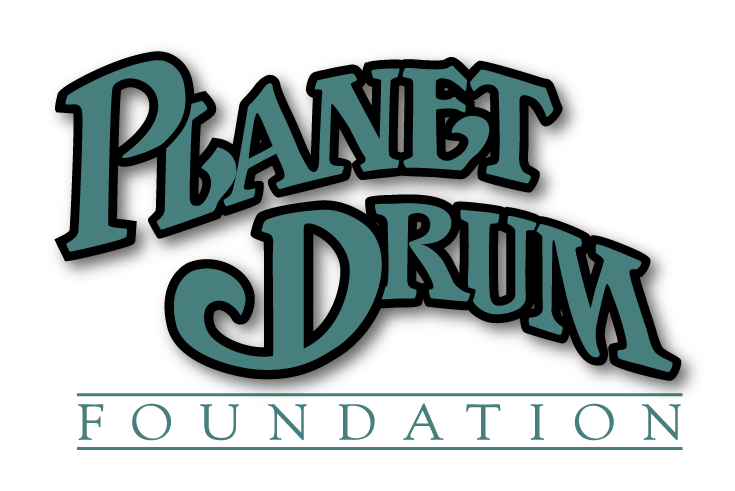
Your point of view caught my eye and was very interesting. Thanks. I have a question for you.
I don’t think the title of your article matches the content lol. Just kidding, mainly because I had some doubts after reading the article.
Reading your article has greatly helped me, and I agree with you. But I still have some questions. Can you help me? I will pay attention to your answer. thank you.